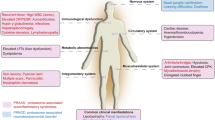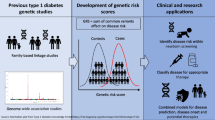Abstract.
Congenital disorders of glycosylation type Ia, (previous name carbohydrate-deficient glycoprotein syndrome type Ia; CDG-Ia) is an inherited disorder of the glycosylation of certain glycoproteins. The defect is caused by mutations in the phosphomannomutase 2 (PMM2) gene located in chromosome region 16p13. The purpose of this study was twofold: (1) to investigate the possible correlation between certain genotypes and the phenotype of the patients and their PMM activity, and (2) to study further the founder origin of the Scandinavian mutations. Sixty-four CDG-Ia patients were studied. Regardless of mutation combination, the patients showed the basic neurological symptoms associated with CDG-Ia. However, patients carrying the mutation 548T→C had less severe disease, e.g., no pericardial effusions, malnutrition, or clinical coagulation disturbances. Liver dysfunction and peripheral neuropathy were milder. In contrast, patients carrying mutation 691G→A showed a high incidence of severe malnutrition and hepatopathy, and they had the highest mortality including affected siblings. Heterozygotes for the two most common mutations (422G→A and 357C→A) displayed a phenotype of variable severity sometimes leading to early death. PMM activity showed no correlation with either genotype or phenotype but was reduced in most patients. There was a pronounced geographic clustering for some of the Scandinavian mutations. For example, 548T→C was almost exclusively found in patients stemming from southeastern parts of Sweden, whereas 26G→A was found to cluster in a region in the most southern parts of Sweden, suggesting that these mutations originated in these two regions separately as founder mutations. The most frequent mutation (422G→A) did not show a specific geographic focus. The widespread 422G→A mutation is probably an older mutation, although haplotype data from intragenic polymorphisms indicate that this mutation also arose only once. The detailed information of the origin of mutations and their respective associated phenotypic pattern should enable improvements to be made regarding tools for genetic counseling and for prenatal diagnoses in CDG-Ia families.
Similar content being viewed by others
Author information
Authors and Affiliations
Additional information
Electronic Publication
Rights and permissions
About this article
Cite this article
Erlandson, A., Bjursell, C., Stibler, H. et al. Scandinavian CDG-Ia patients: genotype/phenotype correlation and geographic origin of founder mutations. Hum Genet 108, 359–367 (2001). https://doi.org/10.1007/s004390100489
Received:
Accepted:
Issue Date:
DOI: https://doi.org/10.1007/s004390100489




